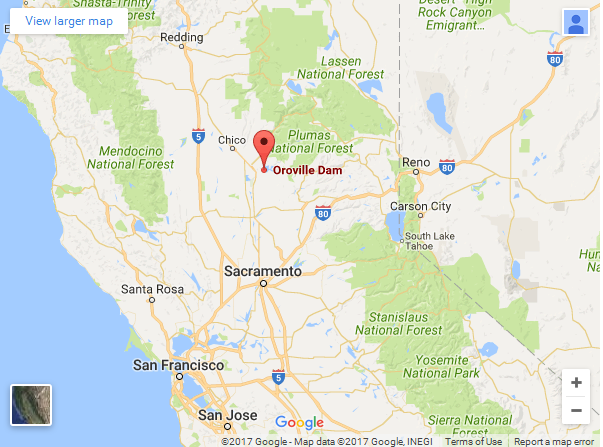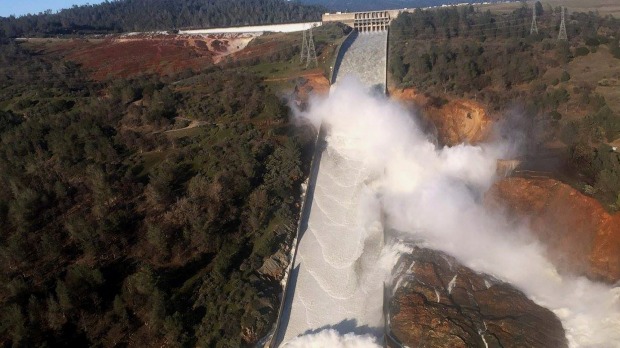Nearly 200,000 people may not be allowed to return home until a crumbling spillway at the largest dam in the US is fixed.

Lake Oroville located about 241km northeast of San Francisco.
The water level behind the dam has dropped, slightly easing the fears of a catastrophic spillway collapse. But with more rain expected later in the week, time was running short to fix the damage ahead of the storms.
The earthfill dam is just upstream and east of Oroville, a city of more than 16,000 people north of the state capital of Sacramento. At 230 metres high, the structure, built between 1962 and 1968, is the tallest US dam, exceeding the Hoover Dam by more than 12 metres.
Authorities ordered mass evacuations on Sunday (local time) for everyone living below the lake out of concern that the spillway could fail and send a 10m wall of water roaring downstream.
Nancy Borsdorf described a scene of chaos on her way out, including drivers abandoning cars as they ran out of gas.
Asked if the spillway was supposed to handle far more water, the acting head of California's water agency said he was "not sure anything went wrong" on the damaged spillway.
The water level in the lake rose significantly in recent weeks after storms dumped rain and snow across California, particularly in northern parts of the state. The high water forced the use of the dam's emergency spillway, or overflow, for the first time in the dam's nearly 50-year history on Saturday.

The damaged spillway and eroded hillside are seen in an aerial photo taken over the Oroville Dam. Nearly 200,000 people won't be able to return until the spillway is fixed.
With more rain expected on Wednesday and Thursday, officials were rushing to try to fix the damage and hoping to reduce the dam's water level by 15m ahead of the storms.
The erosion at the head of the emergency spillway threatens to undermine the concrete weir and allow large, uncontrolled releases of water from Lake Oroville. Those flows could overwhelm the Feather River and other downstream waterways and levees and flood towns in three counties.
Source:
stuff.co.nz